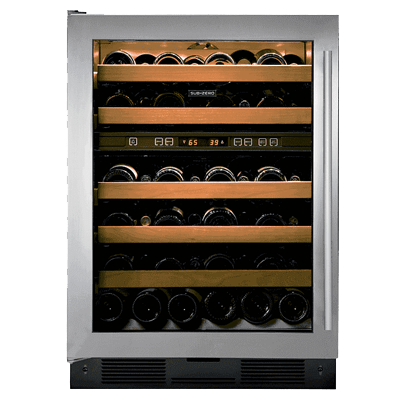A Complete Guide to Wine Cooler Repair: How to Fix and Maintain Your Wine Fridge
If you’re a wine enthusiast, your wine cooler is more than just an appliance—it’s a necessity. But like any appliance, even wine coolers can experience issues. Whether your wine fridge isn’t cooling properly or it’s making unusual noises, understanding how to diagnose and fix the problem is key. In this guide, we’ll dive deep into wine cooler repair basics, common issues, and maintenance strategies to keep your unit running efficiently.

How Wine Coolers Work: A Quick Overview
Before diving into repairs, it helps to understand how a wine cooler functions. Most wine fridges operate either through a thermoelectric system or a compressor-based cooling system:
- Thermoelectric Coolers: These use electrical currents and heat pumps to maintain temperature. They are quieter but more sensitive to external heat.
- Compressor Coolers: Similar to a refrigerator, they use refrigerant and are more powerful but can be noisier.
Identifying the type of system you have will help determine how you should approach the repair.
Common Problems with Wine Coolers (And How to Fix Them)
1. Wine Cooler Not Cooling
This is one of the most frequent complaints. If your wine cooler is not cooling, it could be due to:
- Dirty condenser coils (especially for compressor models)
- Faulty thermostat or temperature sensor
- Blocked ventilation or poor air circulation
- Defective fan motor
How to fix:
- Clean the coils with a soft brush.
- Check if the fan is spinning; if not, replace it.
- Test the thermostat using a multimeter.
- Make sure the cooler has 2-3 inches of clearance around the unit.
2. Strange Noises
A humming or buzzing noise often means the fan or compressor is acting up.
How to fix:
- Check for loose parts inside.
- Make sure the cooler is placed on an even surface.
- Clean the fan blades.
3. Leaking Water
Condensation or leaks are usually caused by blocked drain lines or excess humidity.
How to fix:
- Clean the drainage system.
- Avoid opening the door frequently in humid environments.
4. Wine Fridge Light Not Working
Often a simple fix—likely due to a burnt-out bulb or wiring issue.
How to fix:
- Replace the light bulb.
- If it still doesn’t work, check the wiring or call a technician.
5. Frost Build-Up
If frost is forming inside, it’s often related to a door seal leak or temperature fluctuations.
How to fix:
- Inspect and replace the door gasket if damaged.
- Ensure the temperature setting is not too low.
When to Call a Wine Cooler Repair Service
Some issues require professional expertise, especially if you’re dealing with electrical components or refrigerant leaks. You should contact a wine cooler repair service when:
- The compressor fails
- The thermostat needs replacing
- There’s a refrigerant leak
- You’ve tried DIY fixes and nothing works
Hiring a certified technician can save you time and prevent further damage.
How to Maintain Your Wine Cooler
Proper maintenance can extend the life of your wine fridge and reduce the need for repair.
Routine Maintenance Tips:
- Clean the coils and vents every 3-6 months.
- Use a surge protector to prevent electrical damage.
- Keep the cooler in a well-ventilated area.
- Avoid overloading the fridge.
- Check seals regularly.
Pro Tip: Label and date your wine bottles so you can easily track your collection without opening the door too frequently—this helps maintain temperature stability.
Thermoelectric vs. Compressor Repairs: What to Know
| Feature | Thermoelectric | Compressor |
|---|---|---|
| Noise Level | Low | Moderate to high |
| Cooling Power | Lower | Higher |
| Repair Cost | Less expensive | More expensive |
| Ideal Use | Small collections | Large or long-term storage |
If your wine fridge repair involves a major component like the compressor, it’s often more cost-effective to consider the age of your unit before proceeding with expensive repairs.
Energy Efficiency and Wine Coolers
Malfunctioning wine coolers often consume more energy than properly working ones. If you notice a sudden spike in your electricity bill, it might be time to inspect the cooler. Fixing issues like poor ventilation or a broken thermostat not only preserves your wine but also your wallet.
How Long Should a Wine Cooler Last?
On average, wine coolers last about 9 to 14 years depending on the brand and maintenance level. Regularly fixing small issues can help avoid full replacements.
Conclusion: Keep Your Wine Collection Safe and Cool
Wine cooler issues are common, but many are easily fixable. Whether you’re dealing with a wine cooler not cooling or strange noises, this guide can help you take the right steps to fix your wine cooler or call in a professional when needed. Regular maintenance and timely repairs will ensure your wine collection stays in perfect condition for years to come.
5 Frequently Asked Questions (FAQs)
1. How do I know if my wine cooler thermostat is broken? You may notice incorrect temperature readings or inconsistent cooling. Use a multimeter to check for continuity.
2. Can I use my wine fridge to store other beverages? Yes, but it’s designed for wine. Carbonated drinks or dairy products may not stay as fresh due to humidity and temperature settings.
3. What’s the best temperature for a wine fridge? Ideally, red wines should be stored at 55–65°F, and white wines at 45–50°F.
4. Is it safe to do wine cooler repairs myself? Minor fixes are generally safe. For electrical issues or refrigerant problems, it’s best to call a technician.
5. Why is my wine fridge running constantly? This usually indicates poor insulation, a bad thermostat, or blocked ventilation.
